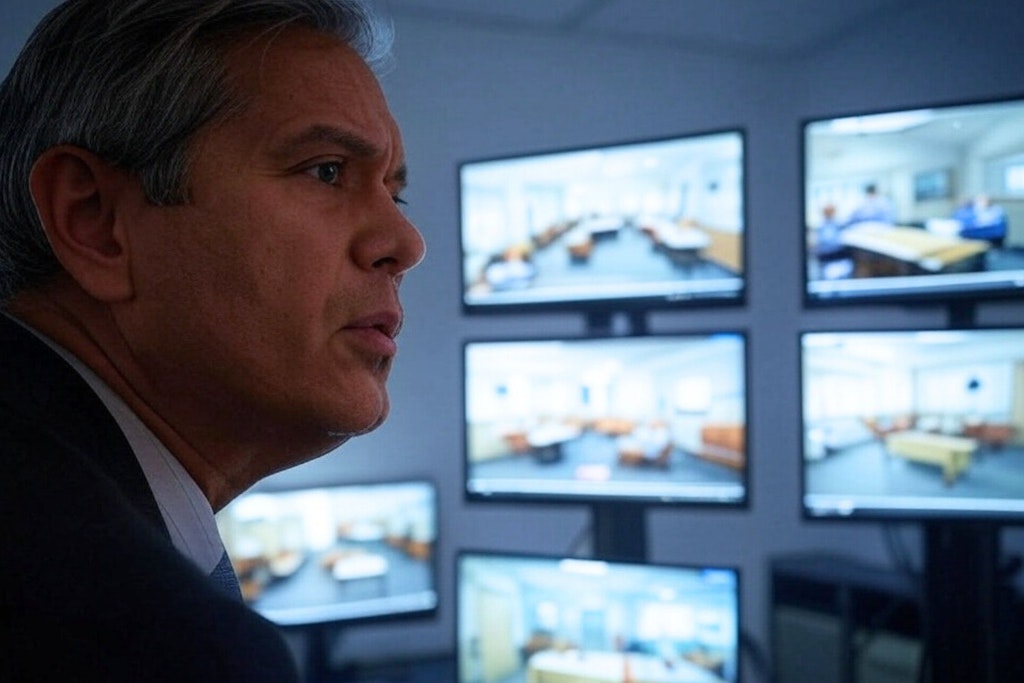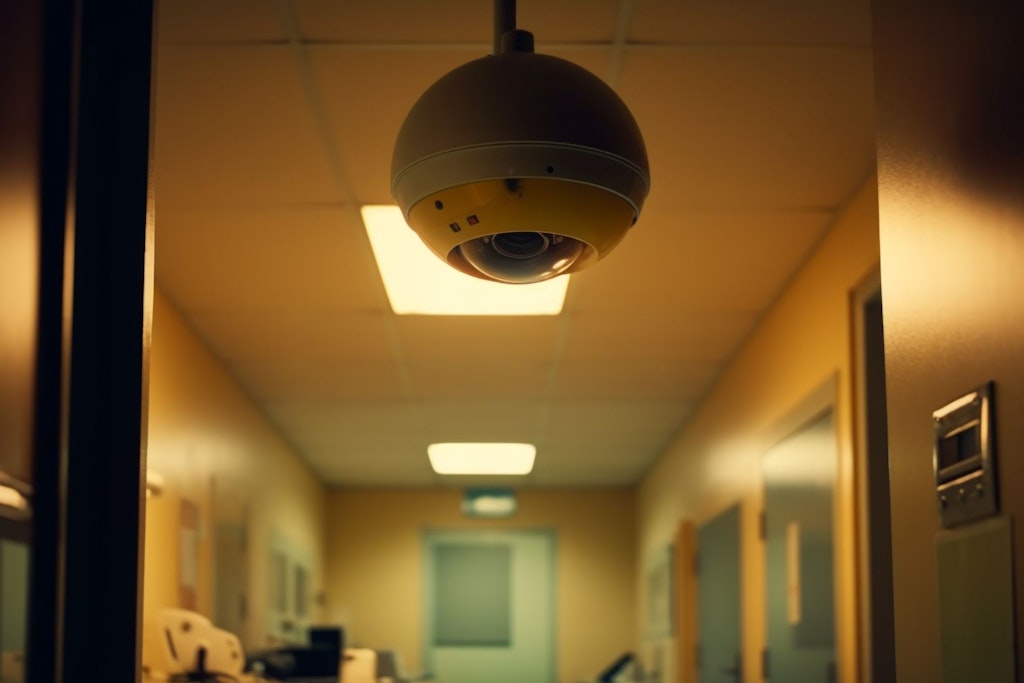Caught on camera: Balancing privacy and safety in aged care
Last updated on 27 May 2025

Nine years have passed since a hidden camera in an Adelaide aged care home captured chilling footage of a resident allegedly being abused by a care worker. It prompted calls to legalise the installation of cameras in private resident rooms.
In 2022, a government-funded CCTV trial in South Australia could have renewed those calls, if it proved successful.
Instead, it ended with a whimper as roughly 12,000 false incidents were reported across two participating homes during the 12-month trial. At one point, the avalanche of false alerts actually led to one real fall being missed. South Australia’s Minister for Health, Chris Picton, labeled it a case of ‘the boy who cried wolf’.
Technology continues to evolve. Motion sensors, radars and wearable technology are helping to improve falls prevention in aged care.
Yet there are still many concerns over cameras and monitoring equipment in private spaces.
Residents often worry about an invasion of privacy that could undermine dignity in their rooms, one of the few places that truly belongs to them. Staff may feel as though they’re under constant surveillance, affecting morale and trust. Family members could lose faith in a provider that seemingly relies on technology at the expense of human interaction.
Can CCTV protect vulnerable seniors and reassure families without stripping away privacy and trust for both residents and staff?
The barriers to innovation
The conversation around aged care surveillance is not simple. Consent, data storage, access, privacy, and more, are all critical concerns and likely barriers to installation — at least in private spaces such as resident rooms.
A fear of being sued if improper policies or agreements are in place is also likely, especially if a resident living with dementia or cognitive decline is involved.
Rob Petreski, Chief Operating Officer (COO) of DreamsEdge, told Hello Leaders that providers are under pressure to improve safety and quality of care. However, he said three common challenges that can deter providers from introducing a resident monitoring system: cost, staffing (training and skills) and a reluctance to try something new.
In terms of cost, he explained that upfront and ongoing costs, alongside associated expenses such as updating electrical or IT systems, often come out of a provider’s pocket due to limited government funding opportunities. When there are other pressing concerns, it is unlikely to be at the top of a provider’s shopping list.
Cost also plays into a provider’s ability to train or upskill staff so they are confident in using and being around new technologies. Then, of course, this all relies on a provider’s willingness to innovate.
“We talk about Australians being innovative but often the first question we get when introducing new technology is ‘Who else has tried it?’. Whereas in North America, the response is always ‘I want to be the first to try it, I want to lead the way.’ Australia can be more conservative when adopting new technologies,” Mr Petreski said.
Additionally, many providers may feel hamstrung by an inability to balance privacy with safety.
“The primary goal we’re trying to achieve is the safety and well-being of residents, so how do we balance that by respecting their dignity, autonomy and right to privacy?’ Mr Petreski added.
“Some technologies can feel intrusive if they’re not thought through carefully. At the same time, providers have a duty of care and legal and ethical obligation to prevent harm to our most vulnerable.”
Privacy v safety: Can they coexist?
The push for cameras in resident rooms comes from a complex starting point. Family members, concerned for the safety of their parents or relatives, installed hidden cameras to catch potential instances of abuse. They ignored likely breaches of privacy to ensure safety.
In a comment shared on LinkedIn, Superior Care Group CEO Russell Egan highlighted this exact issue, pointing out that the Royal Commission into Aged Care Quality and Safety increased demand for resident monitoring.
“I created a Camera Friendly Policy. The demand primarily comes from individual families with low-trust, past incidents, very high interest levels in their relative’s care. There are rules about installation of nanny-cam style devices, but I am happy to partner with such families,” he said.
Dmitry Shibanov, SMPLS INNOVATION CEO & Managing Director, told Hello Leaders he has supported providers to create detailed policies and procedures around surveillance options that respect residents and staff. He said this is necessary as it also reduces the risk of cyber security issues linked to so-called nanny cams.
“When we created the policy and procedures around cameras we gave families options. So if they wanted to bring a camera, just don’t hide it. If there are security issues we can provide a camera that’s connected to our secure network and cannot be hacked,” he shared.
“We also advised families that we would put stickers on the door if a room had a camera so staff are aware and can choose to provide services or not. Staff had no problem with that because there was nothing wrong occurring in the facility.”

He added that many residents are even willing to pay for these services — whether in their rooms or around the home — as it offers a sense of ownership over equipment. Therefore, they can be in full control of the equipment when they are showering or would like privacy with another resident or loved one.
Then there is the technology itself which can promote privacy. For example, DreamsEdge uses an advanced AI optical sensor to transform people into stick figures on the display screen. If that person falls or is moving around at a time when they are at a higher risk of falling, an alert is sent to staff. The advanced AI model ensures highly accurate fall detection and removes false alerts.
Another type of technology incorporates mmWave to detect and track movement, and artificial intelligence tools that process and analyse data to identify and prevent falls. It can also monitor resident vitals contact-free and remotely.
“When we’re monitoring falls or other incidents we want to be as least invasive as possible. We always talk about human-centred care and technology should enhance, not replace, human care. Residents still need to be seen, heard and spoken to, but the technology is there to support caregivers through a proactive approach if an alert goes off,” Mr Petreski added.
Hybrid CCTV solutions that use ambient sensors, wearable devices and AI are more accessible than ever, and they do offer that balance between privacy and security. However, that’s not the only thing providers must consider.
The keys to success
Collaboration, communication and education are essential for building and maintaining trust. Mr Petreski is a firm believer in co-design and clear communication with all stakeholders so that everyone understands what the technology is, how it works, and what outcomes it will achieve.
This includes giving residents, staff and family members the opportunity to opt-in or opt-out of in-room surveillance tools. Mr Shibanov said this is an option in the agreements that residents and their appointed decision makers signed when he designed policies and procedures for providers.
He is confident that uptake would be high across the sector if there was a shift in how cameras are perceived.
“Social robots that are friends residents can talk to are not seen as a danger, but the technology is super powerful. Residents don’t see them as a breach of their privacy,” he explained.
“When you promote CCTV as surveillance, it’s completely different from wellness monitoring that will help prevent falls, for example. Vendors need to think about whether they repackage their offerings because social robots have done it perfectly.”
Meanwhile, Mr Petreski favoured holistic virtual care platforms tailored to individual needs. He said providers just need to consider how they invest and innovate.
“There’s a stigma that people think technology is very expensive and they can’t afford it. However, falls management solutions (detection and prevention) could cost less than a cup of coffee per resident per week,” he added.
“These solutions come from a deeply personal space for us. We all have parents and family either in or who will experience some form of aged care. This is always about a balanced solution that promotes dignity while enhancing protection.”